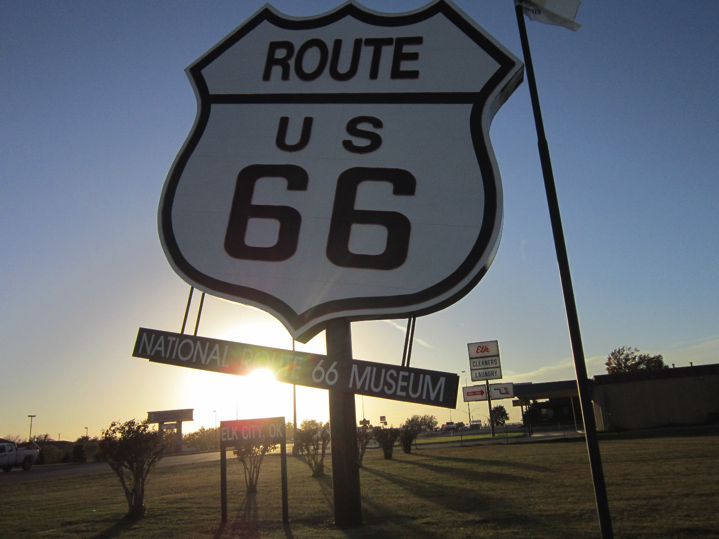This is a four-part series released Monday, December 15 through Thursday, December 18.
Parker Drilling Rig #114 located near downtown Elk City, is a towering relic of the city’s rich oil history. (fans.righands.com)
The repercussions of the mid-80’s downturn were felt for decades in Elk City. In an October 1990 article for The Oklahoman, Ann DeFrange wrote about Elk City’s slow recovery. “It was different this time,” said city Councilman Basil Weatherly. In the past, “we saw a lot of guys out here with diamonds, gold chains around their necks. This time there were three-piece suits, no wild boasts, no razzle-dazzle and hype.” The wildcatters are missing, [Bob] Fleshman said. This go-round the lower-risk theme is “increased density.” Royalty leases are selling at $100 to $200 acre, he said. “At the height of the boom, it was $4,500 an acre.”
Now with industry rising yet again, having a freshly bitter taste of the worst-of-times still in their palate, the community is motivated to use this period of great surplus to firmly establish itself as a regional leader. The tricky part for a city, even with full coffers, is creating an economic niche that truly stands out.
I introduced you a bit to Jim Mason, the current Elk City and Economic Developer in Part 2 of this series. Joining the city government leadership in 2012, he was largely tasked to create that unique economic niche for the city. This, understandably, is quite the abstract task. Mason actually does not have a background in either community or economic development. He was formerly head of the state institute for nanotechnology. Elk City’s leadership was craving more out-of-the-box solutions to enhance their city’s growth going forward, and they considered Mason the person to bring that.
Elk City’s capacity to invest in out of the box solutions is significant. Over the past 8 years, the Elk City’s sales tax receipts have increased by over $567 thousand per year, or 45% (Figure below). That is a tremendous figure for the city of 23,000. The financial surge caused by this recent energy rush has allowed the city to solidify many core community needs, municipal investments that are expected to pay dividends for decades to come.
Core Improvements
Below is a quick overview of a few improvements made over this growth period as shared by Mason:
- New hospital
- Repaved every road and alleyway city-wide
- $6M water treatment facility (under construction)
- Acquired 200 acres of additional water rights
- Comprehensive maintenance on all water towers
- Will have 9 million gallons of water on reserve every day
- Buried all overhead power lines on Main Street
- Replaced all street trees
- Will create first ‘Redbud Festival’ in the spring
- New city park
- Including significant improvements to current parks
- Addition of a Visitor’s Center (planned) and renovations to the Route 66 Museum
Additionally, a 9-year-old dedicated penny sales tax has also reaped a windfall. The tax, meant to fund an indoor sporting and performance arts center, long ago surpassed its initial goal, to cover the construction costs for the facility. Now all excesses produced by the tax have to go to civic improvements . One use of the funds was the housing subsidy program mentioned in the previous blog post. Recently, the city used the penny sales tax funds to acquire railroad-adjacent land where they plan to build an industrial park. There are plans for a referendum to continue the tax and fund a new elementary school.
All of the core investments Elk City is making are accommodating oil-driven growth, growth that may someday end. Granted, with more advanced energy extraction methods available presently, cities proximate to the Anadarko Basin should have many more years of productivity. U.S Geological Survey estimates project that the basin holds some 27.5 trillion cubic feet of natural gas, 410 million barrels of natural gas liquids, and over 490 million barrels of oil. Even so, Elk City is fearful that it will build out the core infrastructure for a city of 23,000 only to face another energy bust. Last time around, even with the great municipal improvements made in the 70’s and 80’s, the city still fell victim to the sudden downturn.
This time around, Elk City hopes to sustain its economic resurgence even in the face of a potential energy bust. According to Mason, Elk City is looking to establish a “differentiated economy.” In the final installment, I will share Mason’s ambitious plans for Elk City to achieve economic strength outside of the oil economy.



